A dip in the pool is a quintessential summer activity, offering a refreshing escape from the scorching heat.
As responsible pool owners, we understand the importance of maintaining clean, balanced water to ensure a safe and enjoyable swimming experience.
One crucial aspect of pool maintenance is the process of shocking, which involves adding concentrated chemicals to eliminate contaminants. However, have you ever wondered what happens if you swim in a shocked pool?
Swimming immediately after shocking the pool can lead to several issues. First and foremost, the increased chemical levels can cause skin and eye irritation.
This may result in redness, itching, dryness, or even more severe reactions for individuals with sensitive skin or allergies.
Swimming in a shocked pool can also lead to respiratory problems, especially if inhaling or swallowing the chemically treated water. It may cause throat irritation, coughing, or difficulty breathing.
This risk is particularly significant for individuals with pre-existing respiratory conditions, such as asthma. Furthermore, swimming in a shocked pool can diminish the effectiveness of the shock treatment itself.
The purpose of shocking is to eliminate contaminants and restore water clarity. Swimming too soon introduces additional organic matter, body oils, sweat, and bacteria back into the water, potentially hindering the shock treatment’s efficacy.
Swimming in a shocked pool means swimming in water that is shocked. First, you should understand what shocking means.
When you know what is happening to your body after shocking a pool, you’ll be able to determine how long you should not swim after shocking a pool.
What Does Shocking a Pool Mean?
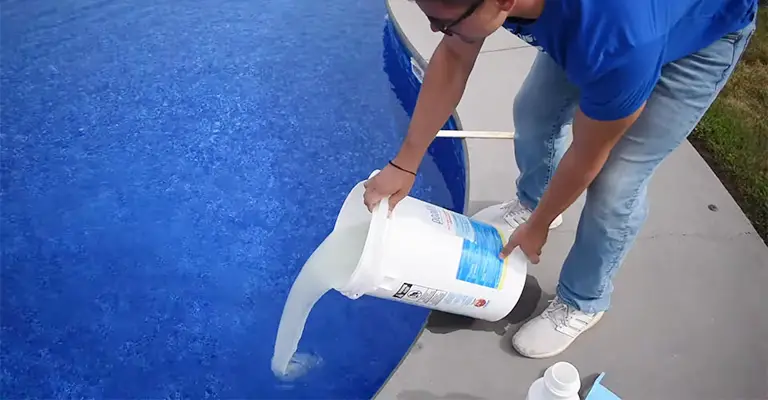
While shocking a pool may sound scary, it has nothing to do with revealing unexpected details or facilitating deliberate electrocutions. Owners of pools probably know this already.
In pool shocking, chlorine or some other chemical is added to the water to eliminate contaminants such as algal blooms and bacteria.
Choosing Between Chlorine and Non-Chlorine Shocks
It depends on the current chemical level of the pools already chlorinated and which type of shock should be applied. Pool shock products typically contain high chlorine, but some are non-chlorine-based.
Regularly adding free chlorine to pool water can keep it clean, but chloramines accumulate over time.
Pool shocks are often performed to eliminate combined chlorine. A swimming pool with excessive chlorine may have a negative effect on water quality.
If you want to induce a breaking point, the amount of free chlorine must be ten times bigger than the combined chlorine amount. To break down the combined chlorine into free parts, you will need shocks that are not chlorinated.
Chlorine Measurements in Pools
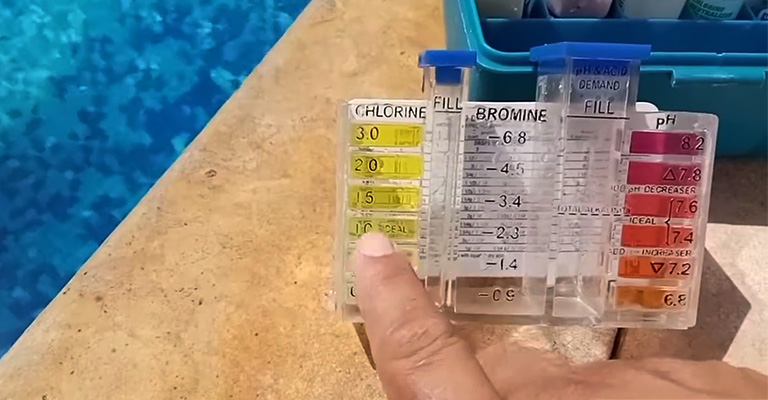
The total chlorine content of a pool or spa is determined by measuring the chloramines and free chlorine levels.
Combinations of chlorine or chlorine particles that have clumped over time also are known as chloramines.
You don’t want too much chlorine in your pool because it’s stuck in a bad relationship, usually with nitrogen or ammonia.
Meanwhile, free chlorine consists of individual chlorine molecules that freely interact with other chemicals, pathogens, and free-floating particles.
Free chlorine in our pools is essential for preventing the spread of potentially harmful pathogens.
When exposed to free chlorine, unwanted particles are often converted into gas, which is released into the air.
Swimming pools contain a total chlorine content which includes chloramines and free chlorine particles.
What Happens if You Get Into a Pool With Shock?
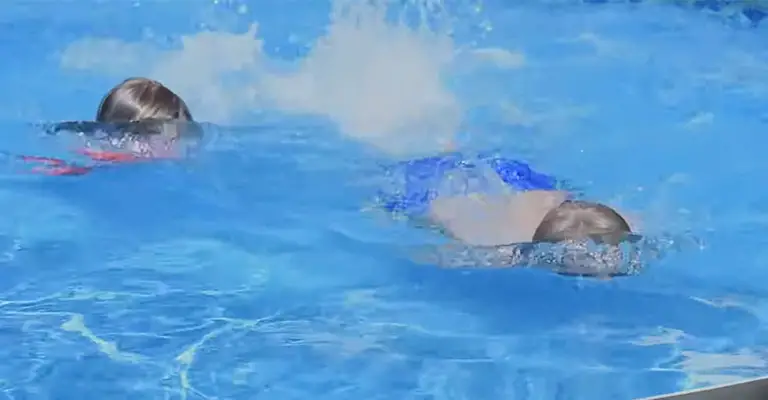
The chlorine levels must be raised before shocking a pool for adequate sanitation and chloramine breakdown.
A pool with this amount of chlorine must be emptied of potentially harmful substances, but it can also harm human health. The reason is as follows:
Discoloration of Clothing
It may be worth taking into account even though this is not a health issue. A pool with excessive chlorine levels is not a good option if you’re wearing expensive designer swimwear.
Chlorine is often used as a cleaning agent, which can make your clothing’s bright colors fade.
Eye Problems
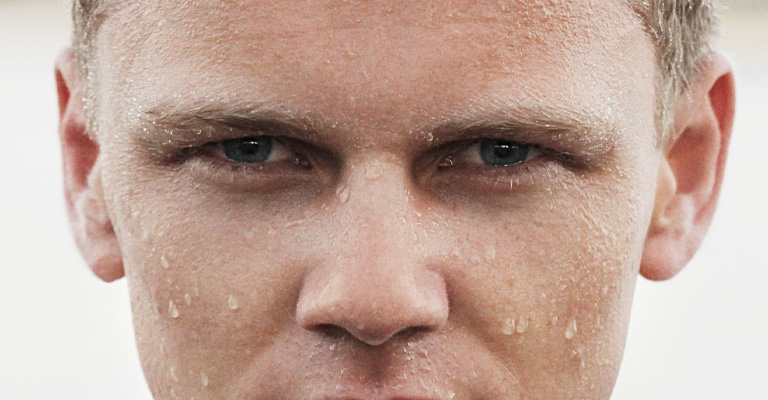
Moisturizing the eyes is a constant process for the human body. Due to too much chlorine contact makes your eyes feel irritated, making things hard and dry.
You will experience severe itching and dryness of your eyes as soon as you get out of the water.
Skin Irritations
The concentration of chlorine in high concentrations can irritate, dehydrate, and burn human skin cells. Further, if you have sensitive skin, your condition could become worse with too much chlorine.
There are more uncomplicated, more tolerable cases of too much chlorine in the pool that may cause a dry skin reaction or a chlorine rash.
Is It Safe To Swim in a Pool That Was Just Shocked?
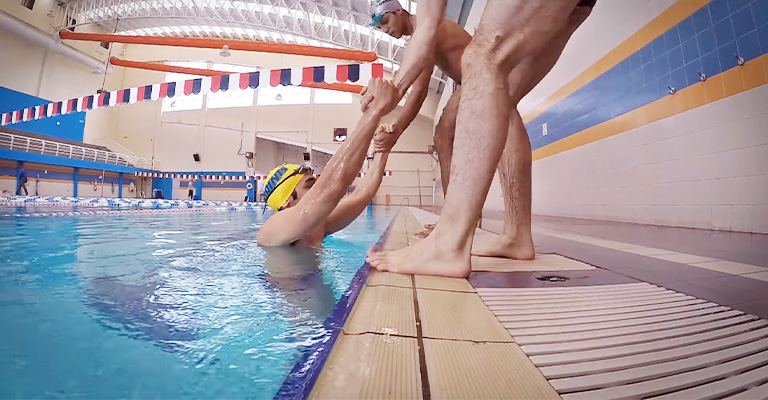
The chlorine level in a pool that has just been shocked must drop between 1-4 ppm before swimming is safe. Moreover, pH levels should be between 7.1 and 7.3.
Your instructor might change the schedule for your private swimming lessons when chlorine levels are considered safe.
Designed to ensure your peace of mind, Peace of Mind Swimming requires chlorine disinfection of swimming pools.
While using recreational waters, our coaches will also ensure that the water chemistry is safe for swimming. If you are swimming in a commercial pool, the facility managers should let you know when not to swim.
What Happens if You Swim in a Pool With Too Much Chlorine?
Earlier in this section, we discussed the immediate effects of swimming in a pool that has just been shocked. We will discuss the more drastic effects of prolonged chlorine exposure in this section.
Breathing Issues
A pool that has been shocked can also accumulate chlorine vapor because chlorine converts particles in the water into gas.
Vaporized chlorine can also be as dangerous as liquid chlorine. Taking it in results in breathing difficulties as it reacts with the inner linings of the lungs.
A swimming pool that has recently been shocked may cause horrendous reactions in people with asthma or chronic bronchitis. Knowing how long you can swim after the shock pool is your best option.
Digestive Problems
You may also suffer from digestive problems in addition to chlorine poisoning. Several digestive problems include severe throat pain, stomach cramps, aches, and diarrhea. Furthermore, nausea and dizziness may also be experienced.
Chlorine Poisoning
Chlorine poisoning can occur when you swallow, inhale, or touch chlorine. Chlorine affects your skin and eyes and has active reactions with your mucous membranes and the digestive tract’s water.
It is during this process that hypochlorous and hydrochloric acids are formed, and these substances can be highly poisonous if consumed.
Generally, chlorine poisoning occurs when household cleaners or recently shocked pools with high chlorine levels are consumed.
How Soon Can You Swim in a Pool After Adding Shock?
There is a range of answers to this question, including an average waiting time of 2-4 hours and as long as 12-24 hours.
You can swim in your pool for longer or shorter periods of time, depending on how much shock you just added.
If you need to use the pool immediately following shock, you should account for an hour per pound of shock product.
Final Words
The shock of a pool means you should know what it is and what it does to your body if you swim in a shocked pool.
It is true that chlorine will kill almost all germs, including those from feces, urine, saliva, and other substances in the pool, but excessive amounts are hazardous.
When enough pool shock is exposed to the body, it can cause rashes, nose and throat irritation, coughs, eye irritation, and other allergic reactions.
The best way to make sure that you have a safe swimming pool when you need it is to plan and prepare ahead.
You can determine how long to wait after shocking a pool if you understand the shocking process and the amount of shock product you use.







